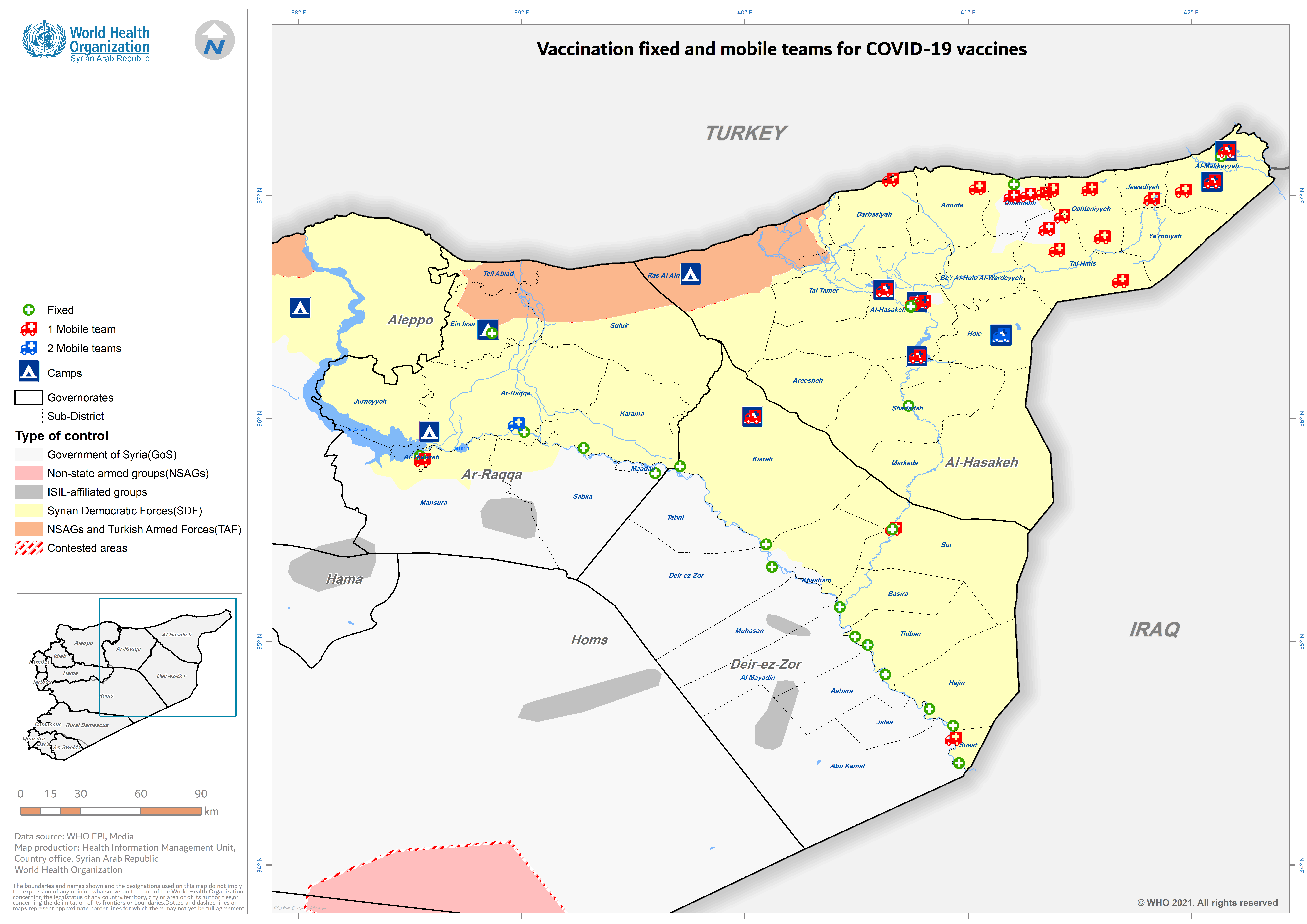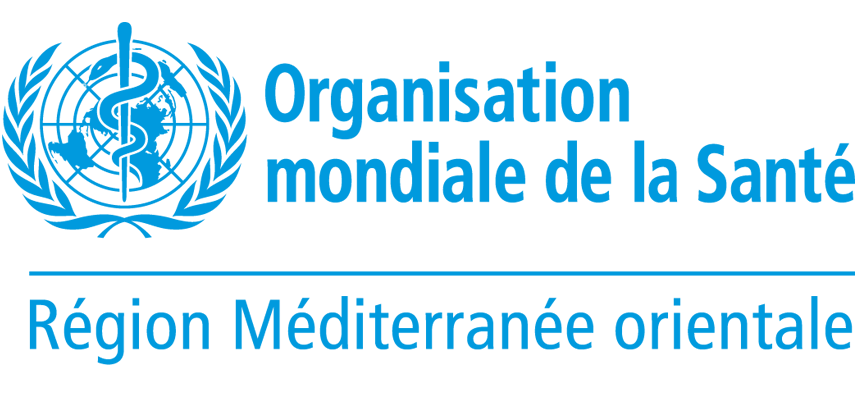Commit to quit: WHO supports people quitting tobacco to have a healthier and brighter future
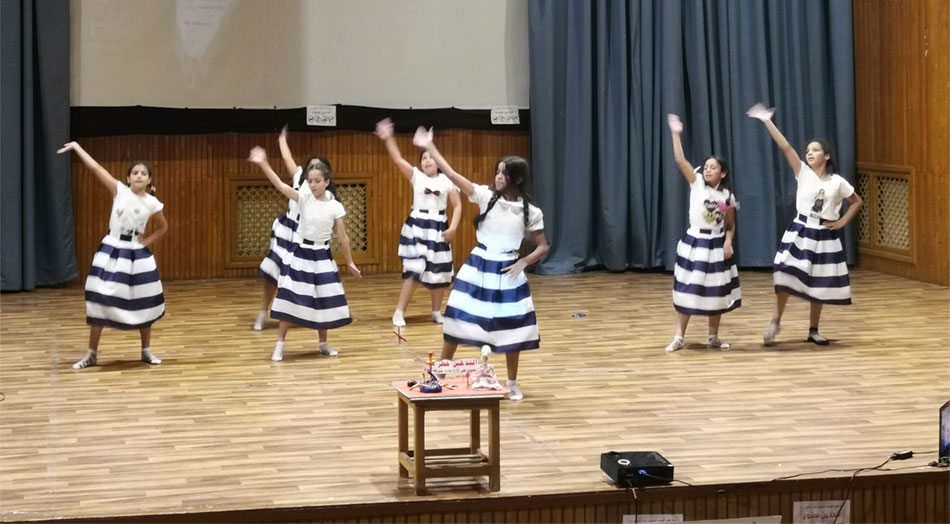
10 July 2021, Damascus – On World No Tobacco Day in late May, the Syrian Ministry of Health in coordination with WHO organized an exhibition of paintings and sketches by children under the theme of “Tobacco Kills”. The exhibition was organized within the context of the WHO campaign “Commit to Quit” and complemented by performances by children of short plays and educational songs, and displays that highlight the shattering consequences of tobacco products, in all forms, on health. A workshop for tobacco control programme coordinators was held prior to the event, and 2 additional workshops were conducted for media representatives on World No Tobacco Day.
Activities were designed with children, adolescents, adults, media and health professionals in mind, in a bid to raise awareness of the harm of tobacco and smoking and the importance of quitting within the community.
“We invite all to play their role by joining the WHO campaign and having a tobacco-free environment that gives people the facts, support and tools they need to quit tobacco,” said Dr Akjemal Magtymova, WHO Representative in Syria.
Syria has recently witnessed an increase in tobacco product consumption, particularly among youths. In response, WHO has supported an increase in the number of tobacco control clinics run by the Ministry of Health, from 13 in 2020 to 24 this year. “These clinics provide free medical advice, and psychological and medical support to smokers who decide to quit,” explains Dr Abeer Obid, Director of the Tobacco Control Programme at the Ministry of Health.
The “Tobacco Free School” initiative was launched in 2018 specifically for target youths. The initiative targeted 42 schools in several Syrian governorates. Other initiatives were launched, such as “Determination and Stability”, which targeted 10 000 young men and women at universities over a 2-month period. “Let the Change Start with You” campaign involving the youth in juvenile centres and orphanages; and “Peer Education” initiative influening smokers through their colleagues.
Smokers are more likely to contract COVID-19 than those who do not smoke. The virus also proves more fatal among smokers. These risks run parallel to an array of others, including the development of cancer, heart disease and respiratory illnesses. Tobacco kills more than 8 million people a year worldwide, 7 million of which are smokers and 1.2 million of which are non-smokers exposed to second-hand smoke.
WHO Syria Marking World No Tobacco Day 2021
Media contact
Gulalek Soltanova
External Relations/Communications Officer
WHO Syria Office
Damascus, Syrian Arab Republic
+963 953 888 477
WHO and partners bring hope for people with disabilities in Aleppo, Syria

9 July 2021, Damascus – Persons with physical disabilities face many challenges, but even more so in a war-ravaged country like Syria, where a barrier-free environment for people with disabilities is merely not an option. Often physical disability leads to hardship as opportunities for employment are limited.
Hanano primary health care (PHC) centre in Aleppo is one of the very few centres in Syria that helps persons with disabilities to overcome the physical and psychological barriers to become more confident and empowered citizens. The centre collaborates with WHO, the United Nations Population Fund and United Nations Office for the Coordination of Humanitarian Affairs (OCHA) that support the efforts of the centre to provide the right tools and therapies to people with physical disabilities. The centre provides people in need with artificial limbs, wheelchairs, canes and crutches, and provides physiotherapy sessions at no cost for beneficiaries.
Unlike other PHC centres, Hanano goes one step further by employing persons with disabilities to manufacture artificial limbs on site within an extended section of the facility. Hanano can only maintain this self-sustaining model with the continued support of WHO, UNDP, OCHA and nongovernmental organizations.
Families across Aleppo have found hope at the centre through life-changing free physiotherapy sessions, artificial limbs and other aids that help people with disabilities regain confidence. The nongovernmental organization Yadn bi Yad (Hand in Hand) has been providing support at Hanano since 2018. It has registered 10 400 people with disabilities and provides services to 3500 community members each month. It also focuses on providing comprehensive trauma care management for persons with disabilities and patients with mental health needs, including the delivery of therapeutic rehabilitation sessions, and tailored vocational training to increase self-dependence and re-engagement as active and participatory members within the community.
With the adequate funding and support, and the engagement of more nongovernmental organizations, the Hanano cetre can support more people in need, and similar services can be replicated to serve people in other governorates of Syria.
Media contact
Gulalek Soltanova
External Relations/Communications Officer
WHO Syria Office
Damascus, Syrian Arab Republic
+963 953 888 477
WHO maintains support to stabilization centres to save innocent lives in Syria
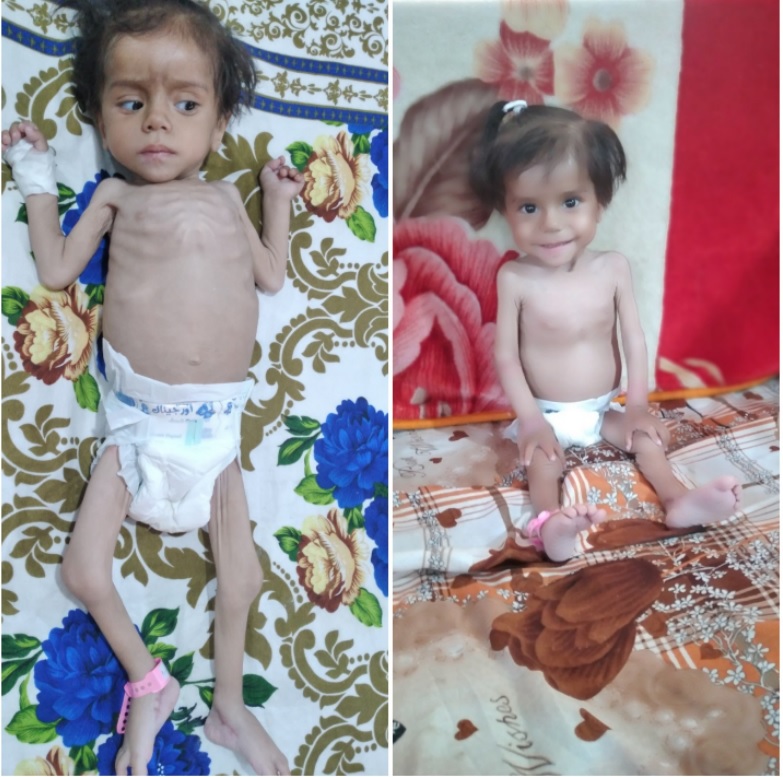
9 July 2021, Damascus – War and insecurity continue to take a toll on the Syrian people. In the decade since the conflict began, many have lost their lives or livelihoods and most of the country’s population suffers from one health condition or another, for which service provision is limited. Among those with dire health needs are children, born in a country ravaged by war and displacement.
Two-year old Sally weighed just 4 kilos when she was admitted to Al-HIkma Hospital in Al-Hasakeh governorate in northeast Syria. She was agitated, wheezing and weak. Sally was diagnosed with severe acute malnutrition and was suffering from several health-related complications, including bronchitis, confirmed through extensive laboratory tests and chest X-rays. The toddler received special nutrients, nebulization and antibiotics and was released after 10 days, once her health was stable and her weight had increased.
“Not only did Sally gain 1.5 kilograms in 10 days, but she also gained a desire to live, a desire to smile and a desire to grow in her skin,” said Sally’s mother, her eyes brimming with tears of joy.
Sally’s case is unfortunately all too common in Syria. Many devastated parents visit the WHO-supported stabilization centres clutching under-nourished emaciated children.
The situation in Syria has never been worse. Syrian families have exhausted their savings and are physically and mentally worn out, unable to provide for their children. The pandemic has added strain to an already grim situation and the economy continues to deteriorate. This has exacerbated an already overstretched health system and led many families to resort to consuming less food of worse quality. Humanitarian assistance has never been more crucial.
In 2020, WHO inspected children at 928 health centres across Syria as part of a nutrition surveillance programme. Among the 1.5 million children under the age of 5 who were screened, 27 000 were found to be suffering from acute malnutrition; 1488 were referred to stabilization centres due to health complications that made them more susceptible to illnesses and placed them at a greater risk of dying from infection and micronutrient deficiency.
WHO is sparing no effort to support under-nourished children. In 2020, WHO took the lead in supporting 25 stabilization centres in the country, 4 of which are in northeast Syria, where nutrition surveillance continues to expand. 500 of 58 000 children screened in northeast Syria were referred to stabilization centres.
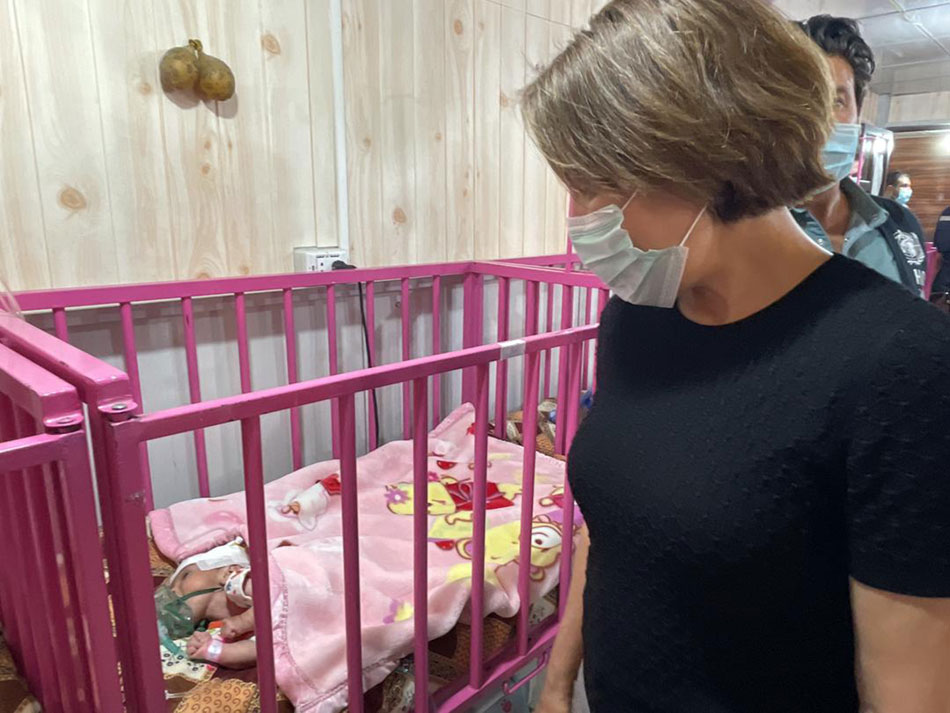
“Preventing child malnutrition requires concerted efforts to ensure that mothers are well-nourished and provided with adequate health services, as well as a clean and safe environment,” says Dr Akjemal Magtymova, WHO Representative in Syria, while on a recent mission to Al Hasakeh governorate. “Combating malnutrition and optimizing early-life nutrition ensures the child’s physical and cognitive development, reduces future health care costs, and increases economic growth.”
Severe acute malnutrition is a life-threatening condition that requires urgent treatment. The developmental, economic and medical impacts of malnutrition are serious and long-lasting for individuals, their families and the country as a whole. WHO calls on Member States to address health equity so that all children have access to essential health services without facing undue financial hardship.
Media contact
Gulalek Soltanova
External Relations/Communications Officer
WHO Syria Office
Damascus, Syrian Arab Republic
+963 953 888 477
Syria completes the first phase of COVID-19 vaccination campaign

 6 July 2021 – Syria received the first batch of vaccines supplied through the COVAX initiative on 21 April 2021. In total, 256 800 doses of AstraZeneca SII COVIDSHILD were received and distributed to Government-controlled areas and northeast Syria, as well as to northwest Syria.
6 July 2021 – Syria received the first batch of vaccines supplied through the COVAX initiative on 21 April 2021. In total, 256 800 doses of AstraZeneca SII COVIDSHILD were received and distributed to Government-controlled areas and northeast Syria, as well as to northwest Syria.
The vaccination campaign in Syria started on 17 May 2021. Of total doses provided to Syria, 53 800 doses were delivered through Gaziantep for use in northwest Syria and 203 000 doses to Damascus for use in a national campaign implemented by the Ministry of Health across all other parts of the country, including northeast Syria.
 Priority groups
Priority groups
Health workers, the elderly and people with comorbidities are the high-risk priority groups as per the National Deployment and Vaccination Plan. The 2 different vaccination strategies are applied: in northwest Syria – all currently available vaccine quantities are dedicated for first dose vaccination, while the national immunization programme split the total quantity available into 2 and has administered first dose vaccines only, keeping the second dose in stocks for later vaccination.
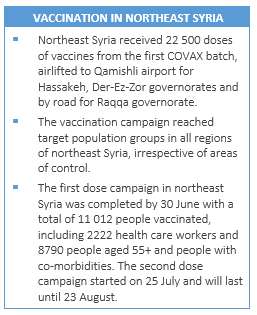 Challenges
Challenges
As in all countries, the COVID-19 vaccination has been a novel process in Syria and a number of challenges was faced since the onset of the vaccination campaign. Though healthcare workers were prioritized, some hesitated to accept a COVID-19 vaccine in general, and AZ, in particular. Vaccine demand generation was and remains especially difficult. With vaccine availability only adequate to cover 0.5% of the population of Syria – compared to the 3% initially planned by June and 20% by December 2021 – a national promotional campaign was suspended, leading to challenges in creating demand. However, as more people received vaccines, the demand also gradually rose.
Joint efforts and way forward
WHO and partners reached out to health care workers at health facilities and through medical syndicates to promote vaccine uptake.
As the vaccines expire in August 2021 and doses must be taken at least 8 weeks apart, the campaign was time sensitive and therefore, vaccines were offered to other groups in order to avoid waste.
Vaccine uptake was initially low across all governorates, but coverage grew as more people took the vaccine without experiencing side-effects, thus building confidence in the vaccine.
WHO works with GAVI – the Vaccine Alliance, UNICEF and its partners to secure the second batch of COVAX facilitated vaccines in the near future.
Related link
Vaccination updates, January-June 2021
